Tour code: SWTB031
5 Days Beijing-Lhasa Express Railway Train Tour
-
Trip highlights
Fly to Lhasa, visit the Potala Palace, Barkhor Street, Jokhang Temple, enjoy the colorful culture of Lhama Buddism; Take 36 hours Lhasa to Xian train at an altitude more than 4,000 metres.
-
Tour price
-
Destinations
Beijing, Lhasa, Xian
-
Tour type
Private tour available everyday, private tour guide & driver
Day by Day Itinierary
| Day 1 Beijing, Lhasa ( ) |
| Please go to our office in Beijing to get your Tibet Travel Permit one day prior. Own arrangement to go to Beijing airport for the flight to Lhasa. Be met by our English speaking tour guide in Tibet & transferred to your hotel in Lhasa. Free at leisure to acclimatize yourself to the high latituder. |
Lhasa | Lhasa has an elevation of 3650 meters and sits at the center of the Tibet Plateau. It has a history of more than 1300 years. It towers as a huge magnet attracting those who want to explore its culture. Entry into Lhasa allows each traveler the chance to glimpse into Tibet. |
|
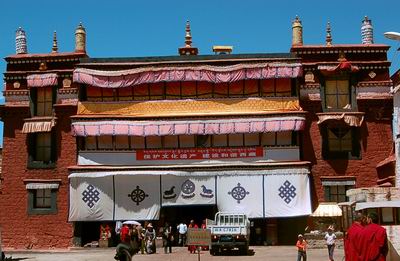 |
| [ Optional ] Ramoche Monastery: it is one of the key cultural relic protection sites in Lhasa, located on the north of Barkhor Street, in the area with a local market and many traditional style Tibetan style civilian houses. |
|
| Day 2 Lhasa ( B,L ) |
| Visit all must see attractions in Downtown Lhasa. |
The Barkhor Street | The Barkhor Street is Lhasa's inner pilgrim circuit shaped roughly like an octagon that runs around the Jokhang. The circuit is lined with markets, shops, stalls and street vendors providing every conceivable item a Tibetan could need. The best place to start the circuit is right outside the Jokhan…… | The Jokhang Temple | The Jokhang Temple is the spiritual centre of Tibet - a destination for millions of Tibetan pilgrims. The oldest part of the temple dates back to the 7th century AD - being one of the two temples built by King Songsten Gampo to house the statues of the Buddha that his two foreign wives brought to Ti…… | The Potala Palace | The Potala Palace is a landmark of Lhasa and Lama Buddism. It is a 13 storey and 1000 rooms' palace and once winter residence of the Dalai Lama. The construction of the present structure began during the reign of the fifth Dalai Lama in 1645 and took more than 50 years to complete. |
|
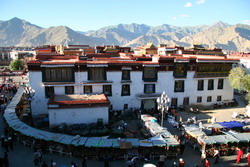 |
| [ Optional ] Tibetan Family Visit: Every Tibetan family has been either directly or indirectly affected by the Chinese, Indian and Nepal culture. Family life is one of the most interesting attractions during your stay in Tibet. Common Tibetan people welcome you to their homes, greet you in their traditional way and entertain you with their typical food. |
|
| Day 3 Lhasa ( B,L ) |
| In-depth tour to explore splendid traditional Tibetan culture. Every program today is the highlight. |
The Tibet Museum | The Tibet Museum, located in the southeastern corner of Norbu Lingka, Lhasa, is the first of its kind in Tibet to be provided with the latest in equipment and facilities. The Tibet Museum was completed and opened in October 1999. | The Drepong Monastery | The Drepong Monastery: a cluster of white buildings resembling a riceheap, against the backdrop of Mount Gyenbuwndze. Founded in 1416, Drepong is the biggest and richest monastery in Tibet that was divided into four Tantric colleges - that specialised in different branches of knowledge. | The Sera Monastery | The Sera Monastery lies on the northern edge of Lhasa at the base of Tatipu Hill. 'Sera' means 'merciful hail' denoting its rivalry with the 'Rice Heap' (Drepong) since hail destroys rice. Sera was smaller than Drepong with about 7,000 monks but was very rich and comparable in power. |
|
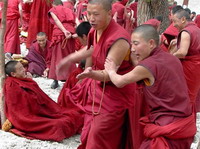 |
| [ Optional ] Norbulingka: The Norbulingka Park: Norbulingka means "Jeweled Garden". It was constructed as a summer palace for the Dalai Lama at the very beginning and later served as the whole governmental administration. |
|
| Day 4 Lhasa ( B ) |
| Transfer to take 36 hours train (soft sleeper) to Xian. Stay overnight on the train. Train No.: T 28 (leave Lhasa at 08h30, arrive Xian at 20h28 next day) |
Express train T28 Lhasa to Beijing | It departs from Lhasa at 09h20 on Day 1, arrives at Beijing West Train Station at 07h34 on Day 3. You need to stay 46 hours on the train. The train passes Xian at 20h22 on Day 2, many passengers end their train journey here, visit the Terra Cotta Warriors. |
|
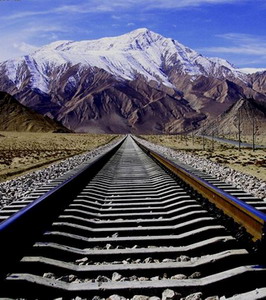 |
| [ Optional ] Qinghai-Tibet Railway: The highest point of the Qinghai-Tibet Railway is the Tanggula Mountain Pass, which is at an altitude more than 5,000 meters above sea level. At this point passengers may experience slight high-altitude-reaction symptoms, such as headaches, but they soon pass as the train heads downward. |
|
| Day 5 Xian ( ) |
| Arrive at Xian at night. Own arrangement for your time in Xian. Recommend you to take our 2-day city tour packages. http://www.chinadiscover.net/china-vacations/day_by_day.aspx?tc=SWXian001 |
Xian | Xi’an, named “Chang’an” in ancient time, is the ancient capitals of 13 dynasties, dating back to 3100 years ago. It’s the starting point of the Silk Road and honored as the World Historic City by UNESCO in 1981. Hence, it’s the first choice for those Chinese civilization lovers. |
|
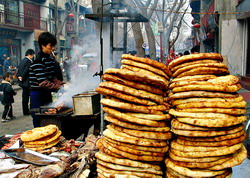 |
| [ Optional ] Muslim quarter: The Muslim Quarter features a mix of Chinese and Islamic cultures. It wins the reputation for the alley lined with market stall and the tasty snack food. Meanwhile, it is a good place to head for when looking for those hard-to-find souvenirs. |
|